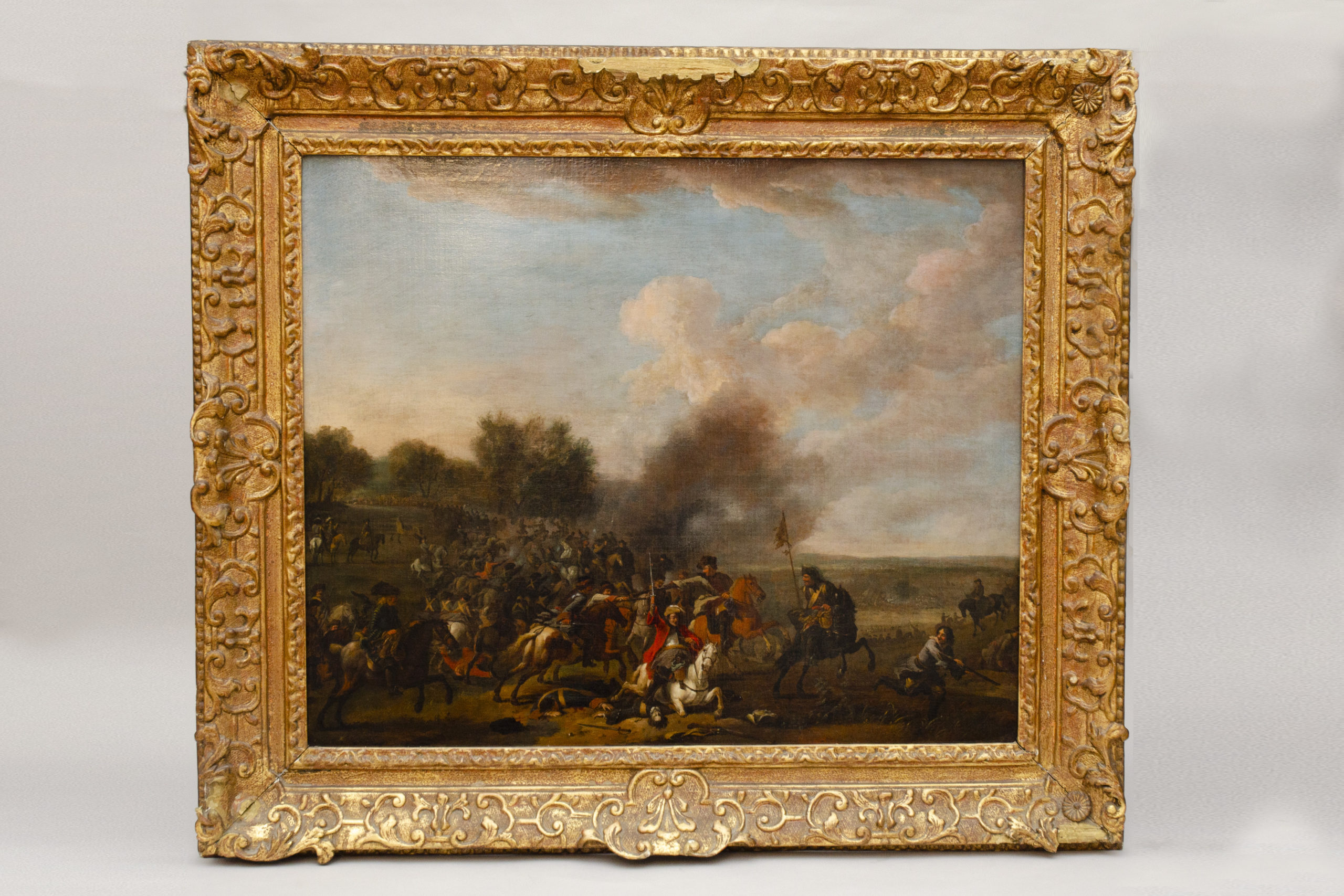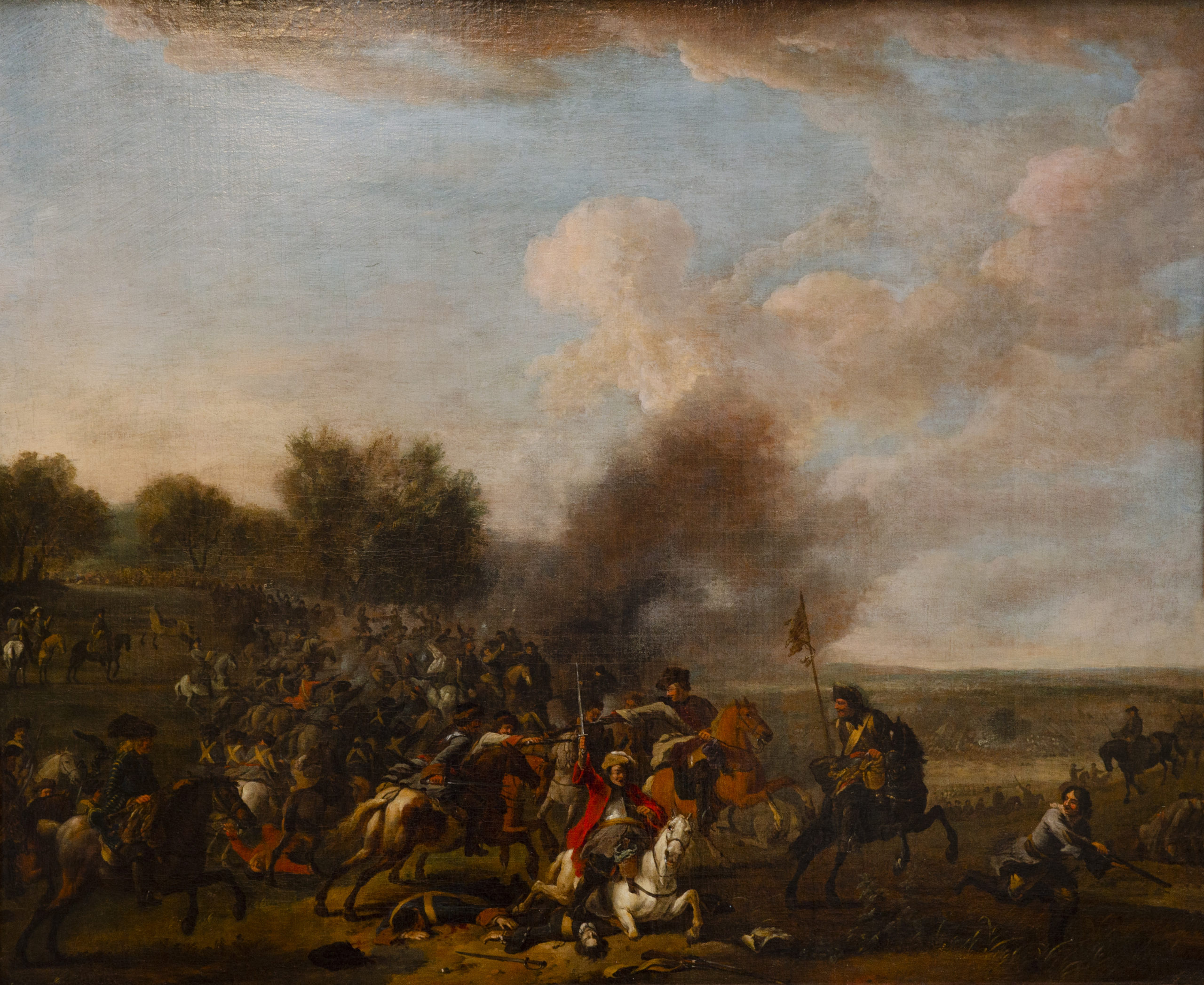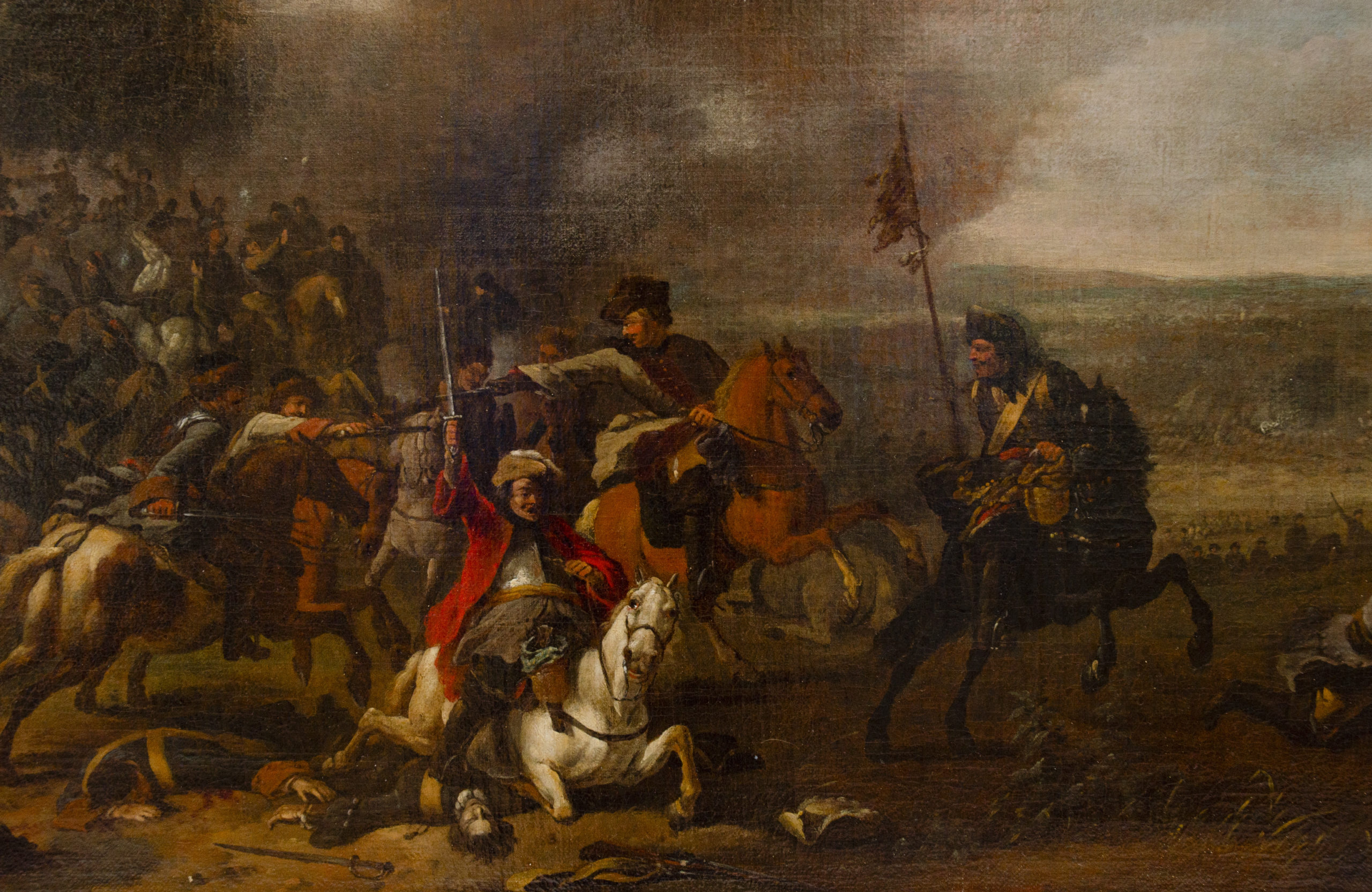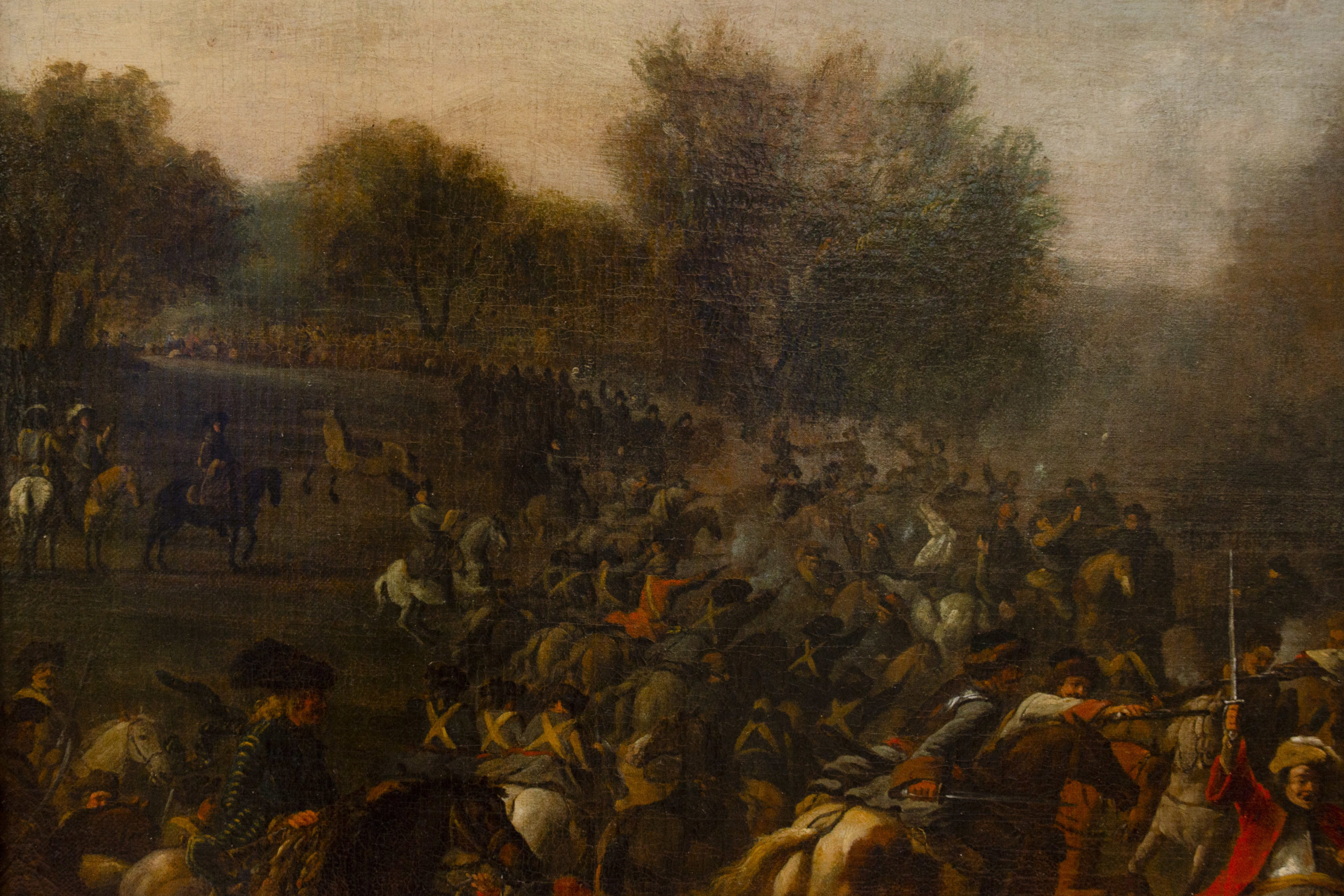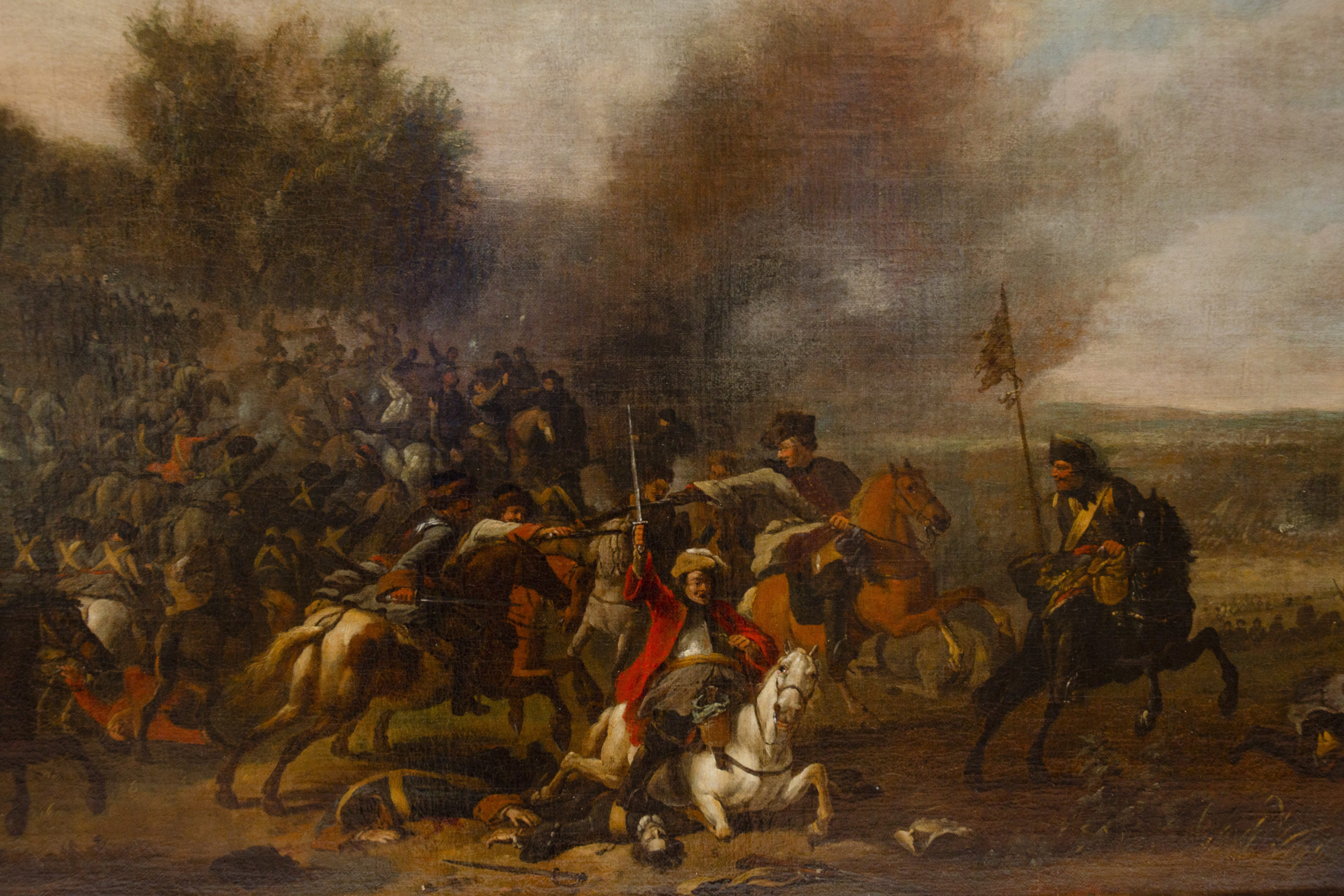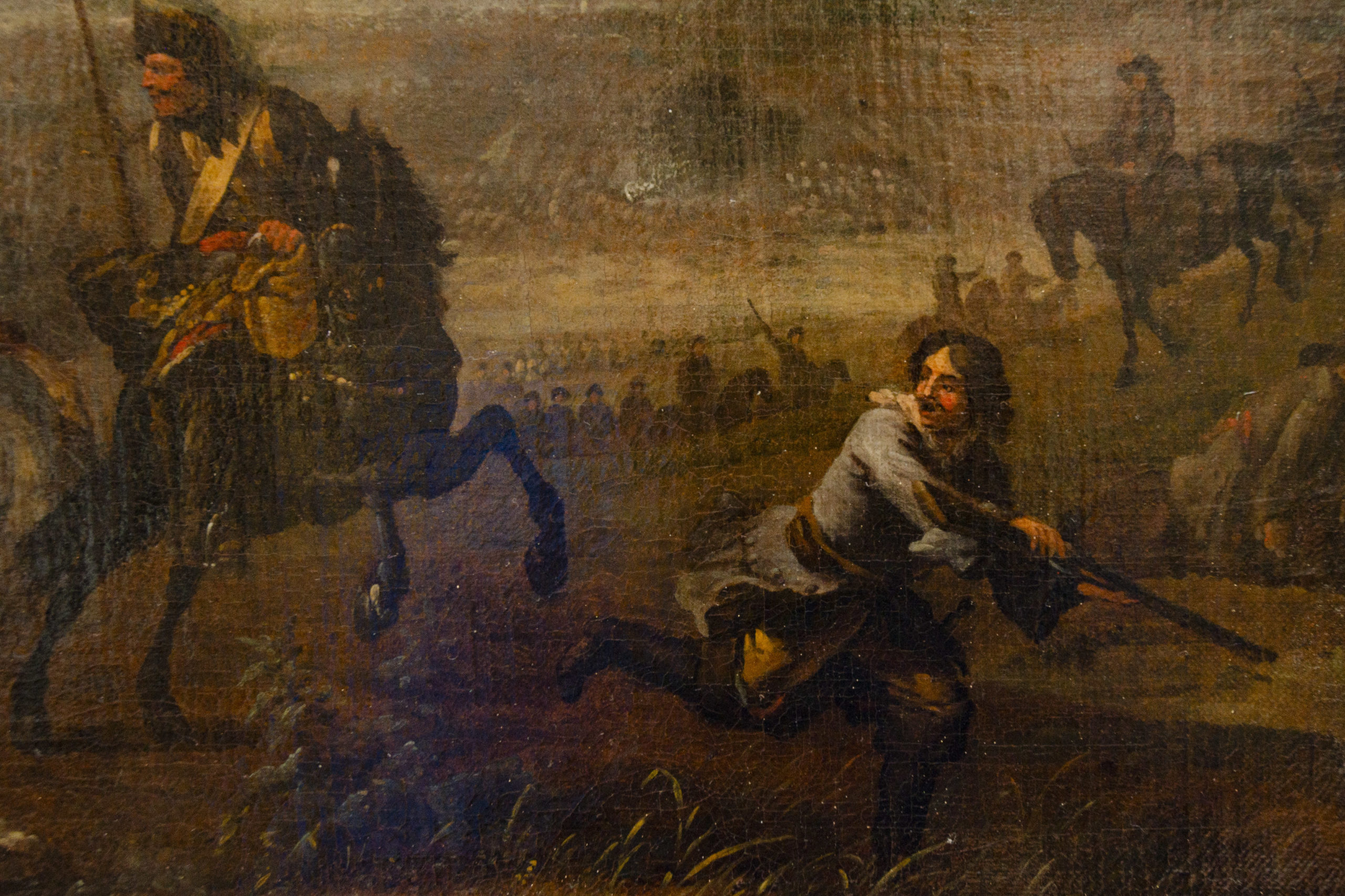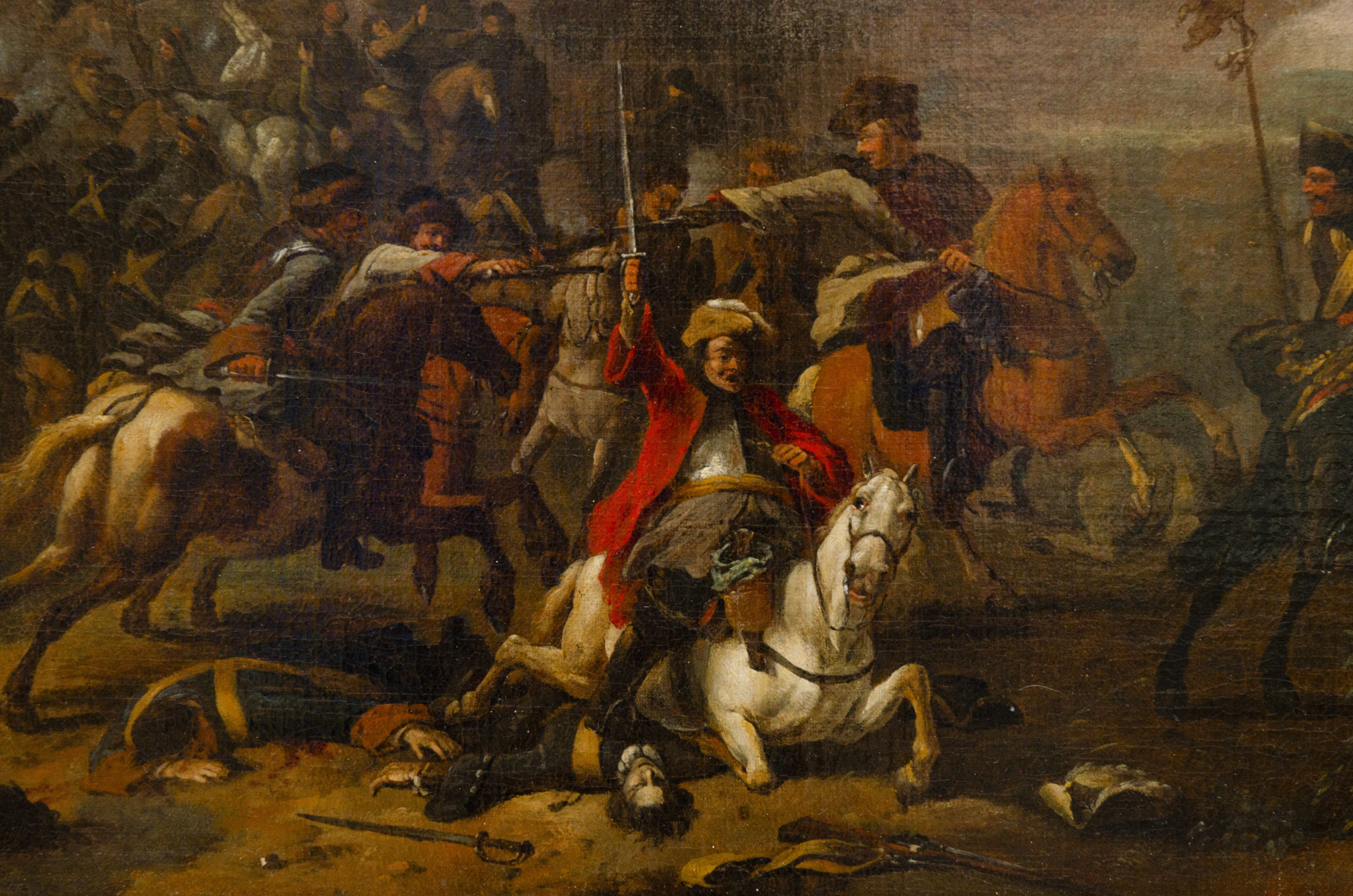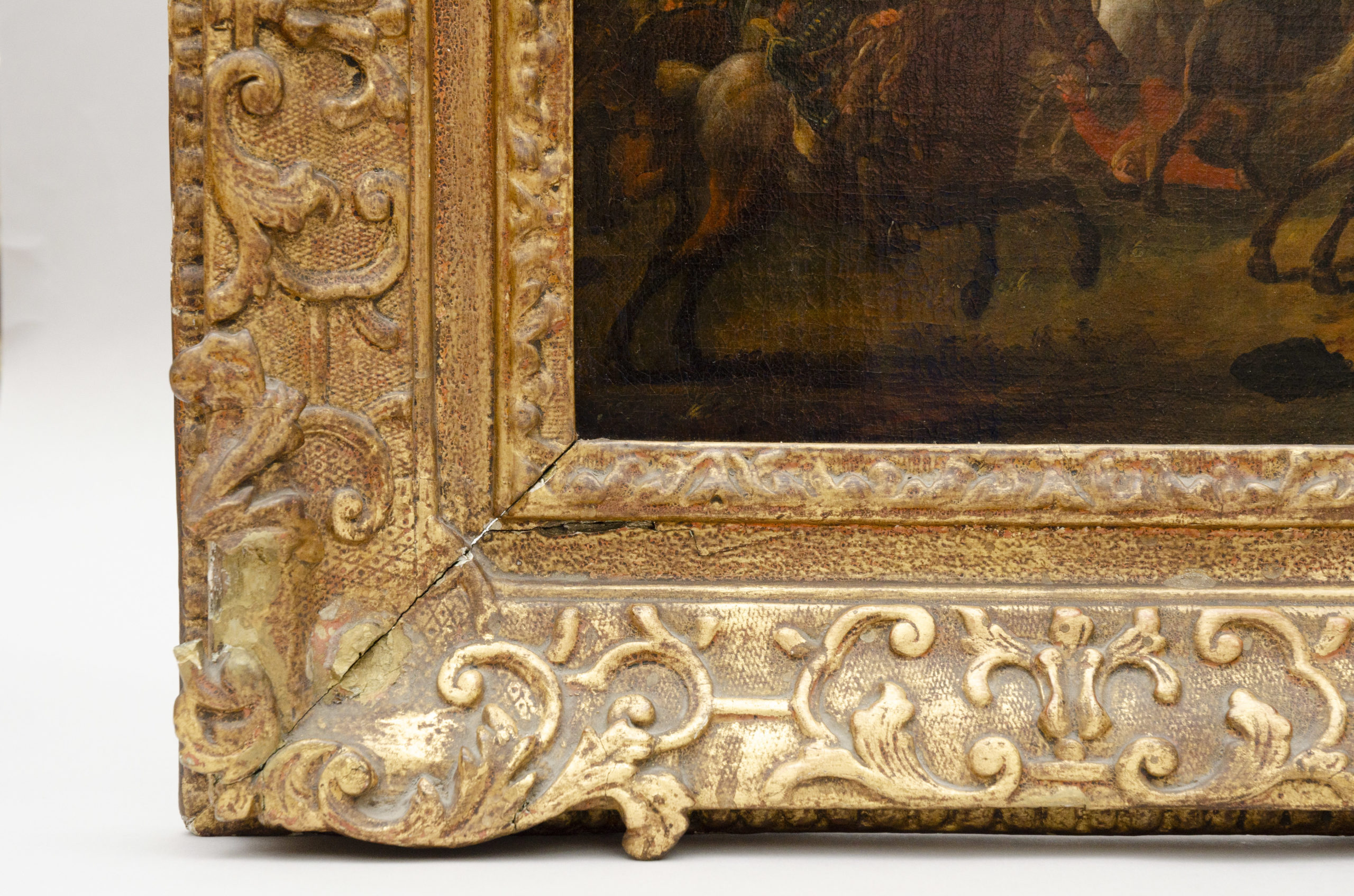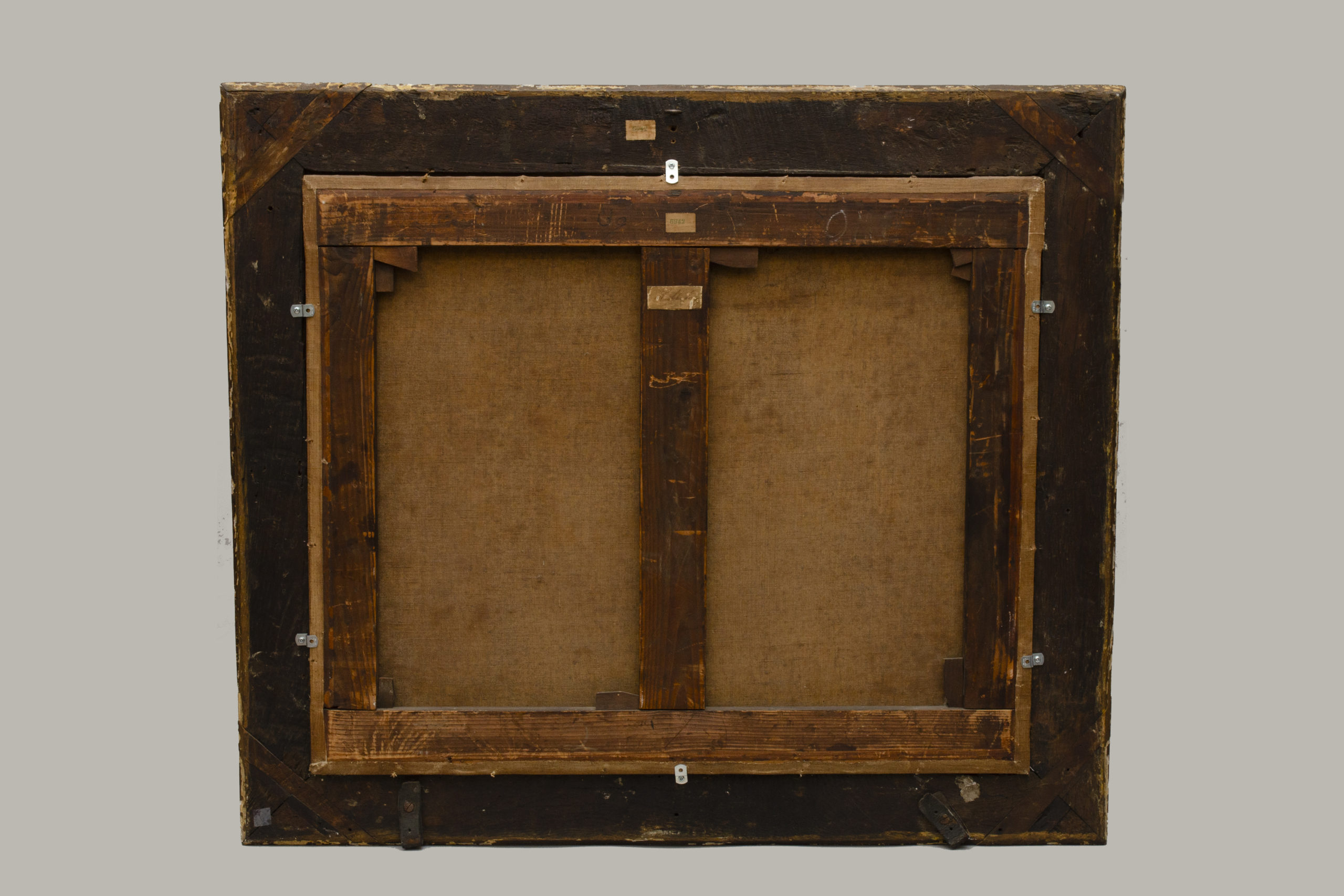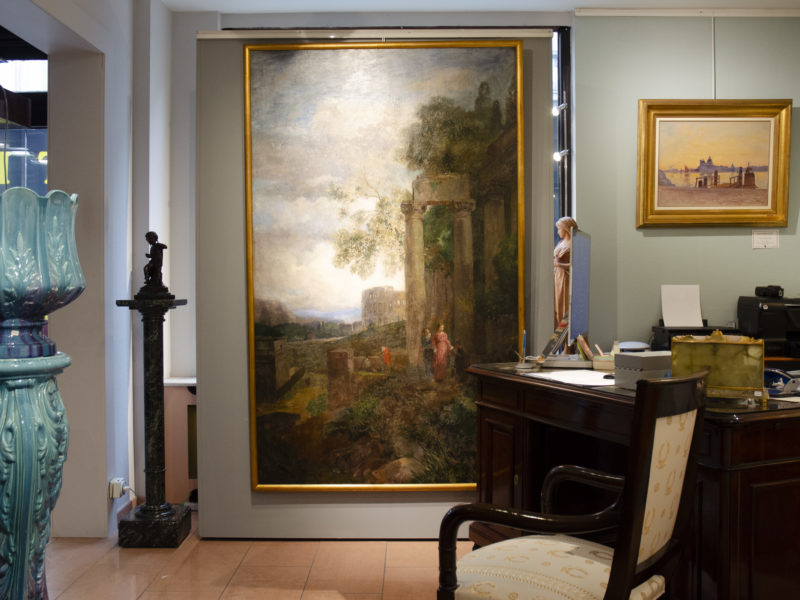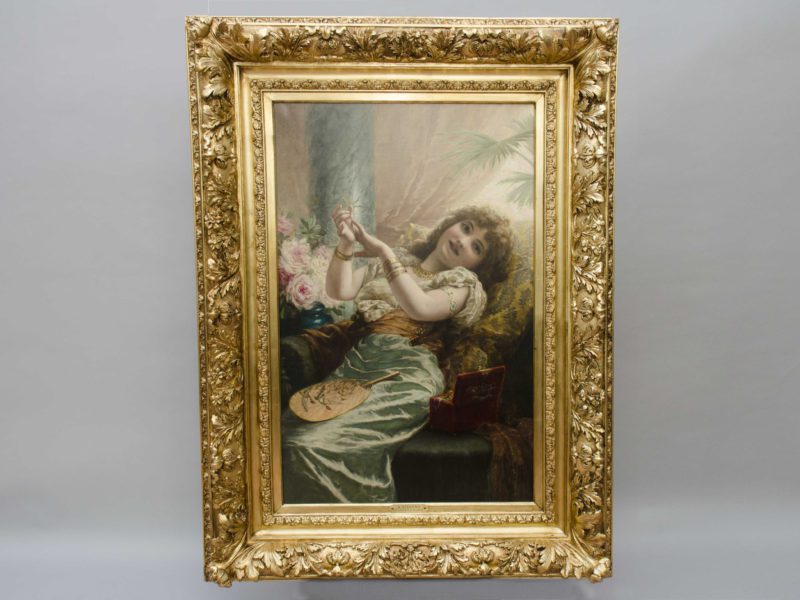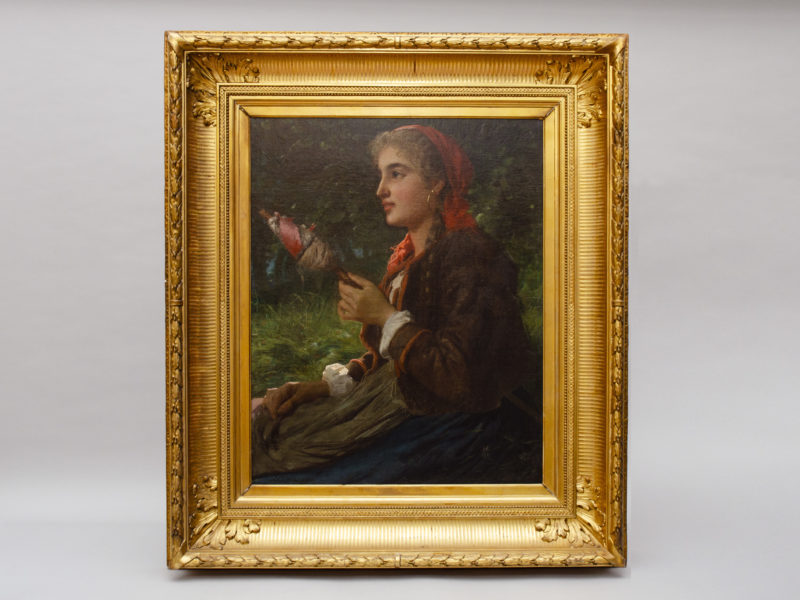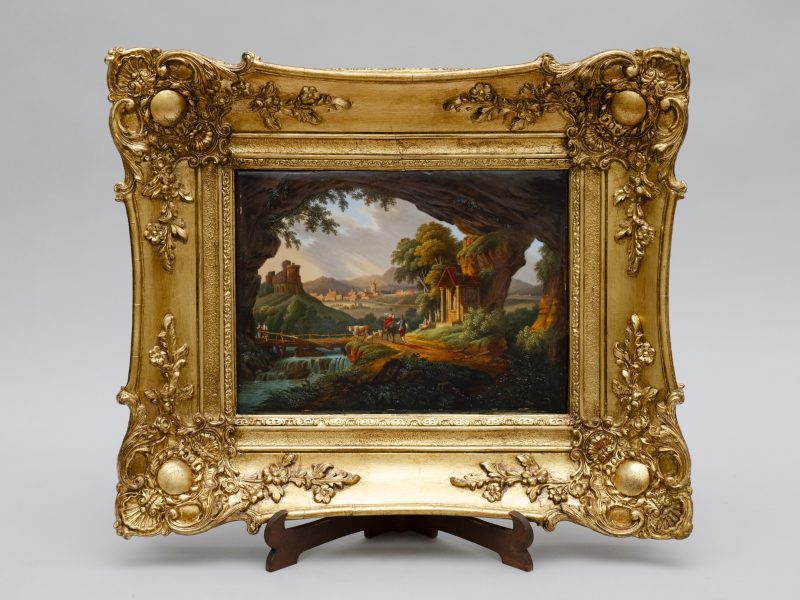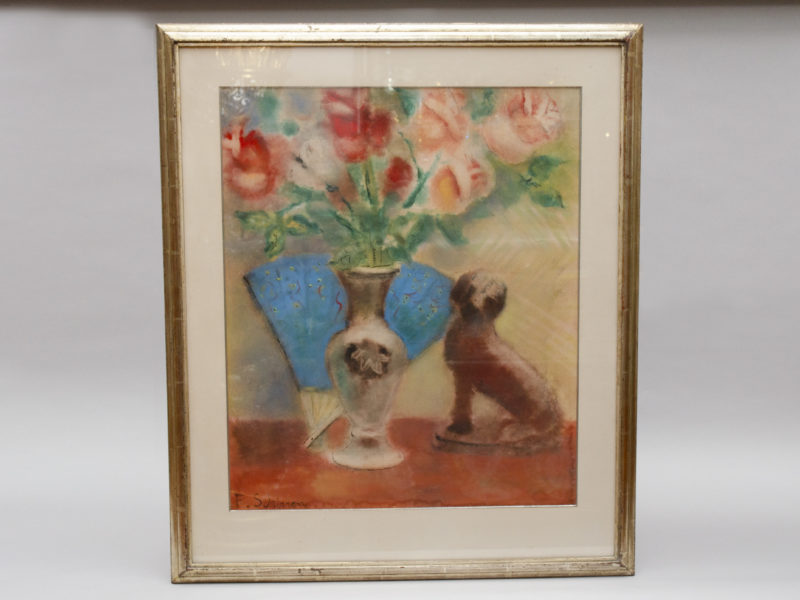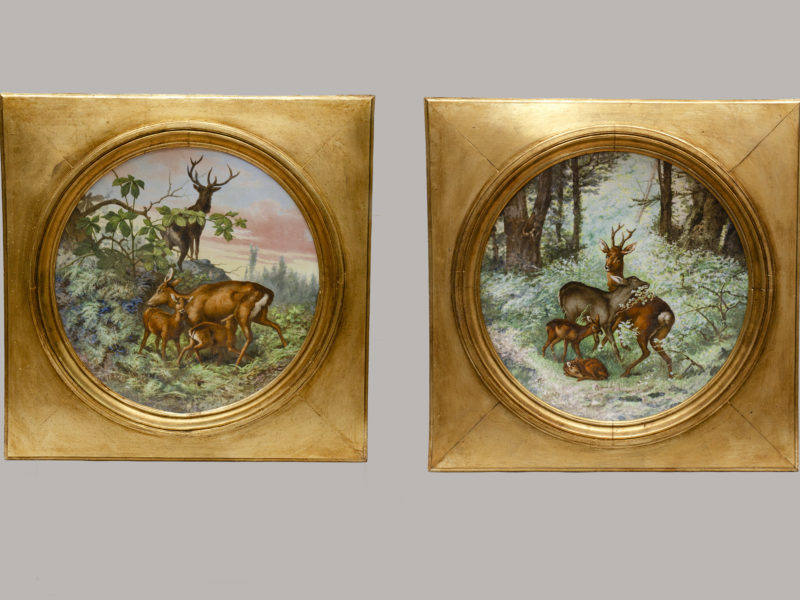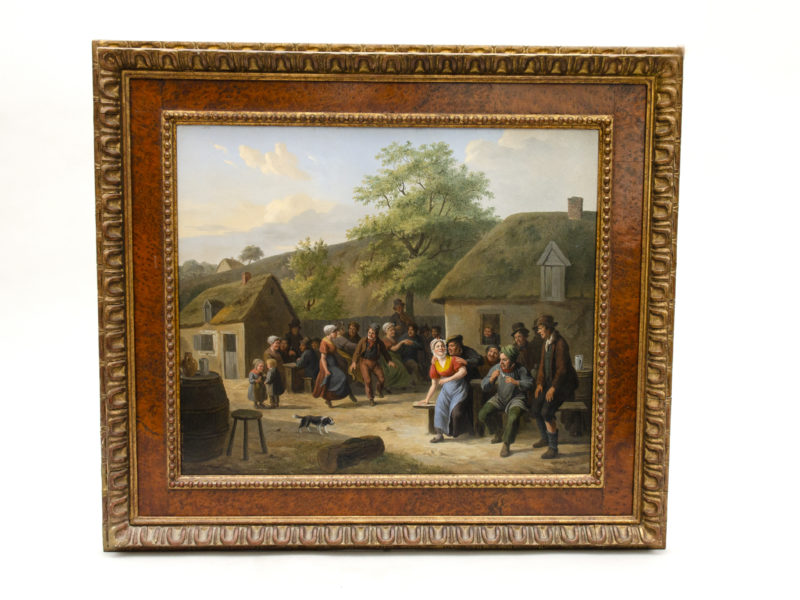“Cavallerie battle”, Francesco Guiseppe CASANOVA
8.500€
In stock
Beautiful battle of horsemen on a field near a forest. Vibrant oil on canvas by the great Italian master Casanova. This painting is illustrated in the book ‘I pittori di battaglie’ by Giancarlo Sestieri, published by Luca, 1999, p 265. A rare work on the market.
Size: H 61 cm x W 74 cm – with frame H 84 cm x W 96 cm
Italian school of the 18th century.
Lit: Francesco Giuseppe Casanova was an Italian battle painter and engraver who worked for many European courts during the second half of the 18th century.
The son of a budding actress in London, he was the younger brother of the famous Venetian diplomat Giacomo Casanova and took advantage of Casanova’s connections to promote his work. His brother Giacomo’s biography mentions the harsh conditions in which he began his career as a painter in Gianantonio Guardi’s studio. He then moved to the studio of the renowned painter and set designer Antonio Joli, who worked diligently in the two theatres owned by the Grimani family. Casanova then decided to change genre, and moved to the studio of Francesco Simonini, a battle painter who used Le Bourguignon as a model. After settling in Paris in 1751, the following year he went to Dresden, where he stayed until 1757, spending his time copying the best battle paintings in the Saxon Electors’ gallery. On his return to Paris in 1758, he completed his training in Charles Parrocel’s studio. As well as battle paintings, Casanova painted landscapes with figures and cattle, as well as pastoral subjects. His early works were hailed by the critics, including Diderot himself. He won the favour of the Royal Academy of Painting and Sculpture and exhibited at the Salon from 1763. Throughout his long career, he served the most powerful princes in Europe, including Catherine II of Russia, the Grand Condé and the Prince-Elector of Saxony, Frederic II. It was probably also around 1770 that he painted the series of four ‘Catastrophes’ housed in the Musée des Beaux-Arts in Rennes. In 1783, fleeing a disastrous second marriage, he took refuge in Vienna, where, thanks to the friendship of the Prince of Ligne, he met the minister, Prince Kaunitz, and reached the height of his success. It seems that, in addition to his skill as a painter, the Prince of Ligne appreciated his particularly brilliant conversation and his extrovert character, similar to that of his brother Giacomo, of whom the Prince was and remained one of the most devoted friends.
In the following years, he continued to serve an institutional clientele. His main paintings were those depicting the battles won by the Prince of Condé, and those he executed for Empress Catherine II of Russia, depicting the victories won by the Russians over the Turks. Many of his paintings were bought or commissioned by Catherine7 and are now in the Hermitage Museum in St Petersburg. Casanova also enjoyed great success as a designer of tapestry and fabric cartoons, generally depicting rural landscapes. This activity, secondary to that of artist, brought him enormous profits. From 1770 to 1787, he worked in this field with the Royal Manufactory of Beauvais.
His works can now be found in Europe’s greatest museums, from the Hermitage to the Louvre. In France, in addition to the Musée Condé, regional museums such as those in Bordeaux, Rennes, Brest and Grenoble own his works. In addition to the collection, his work is the subject of several studies.
In stock
